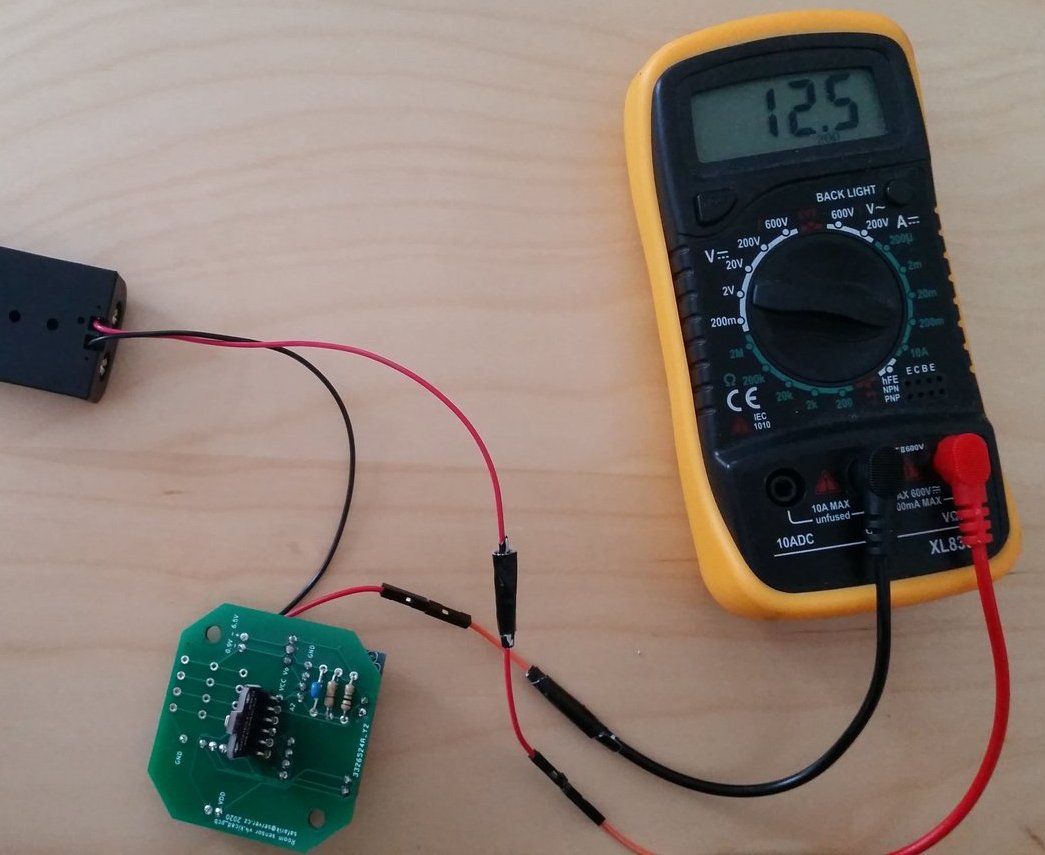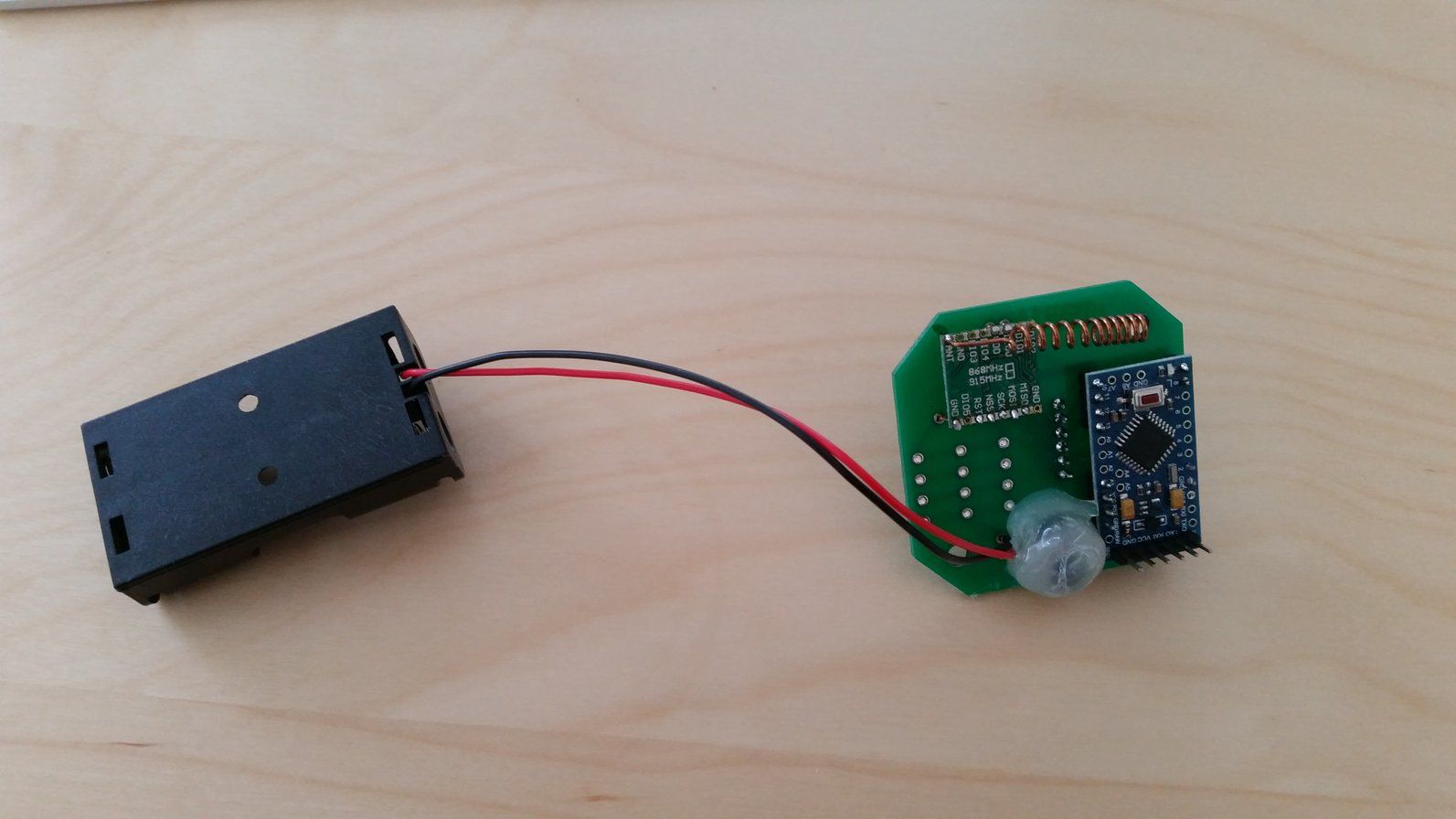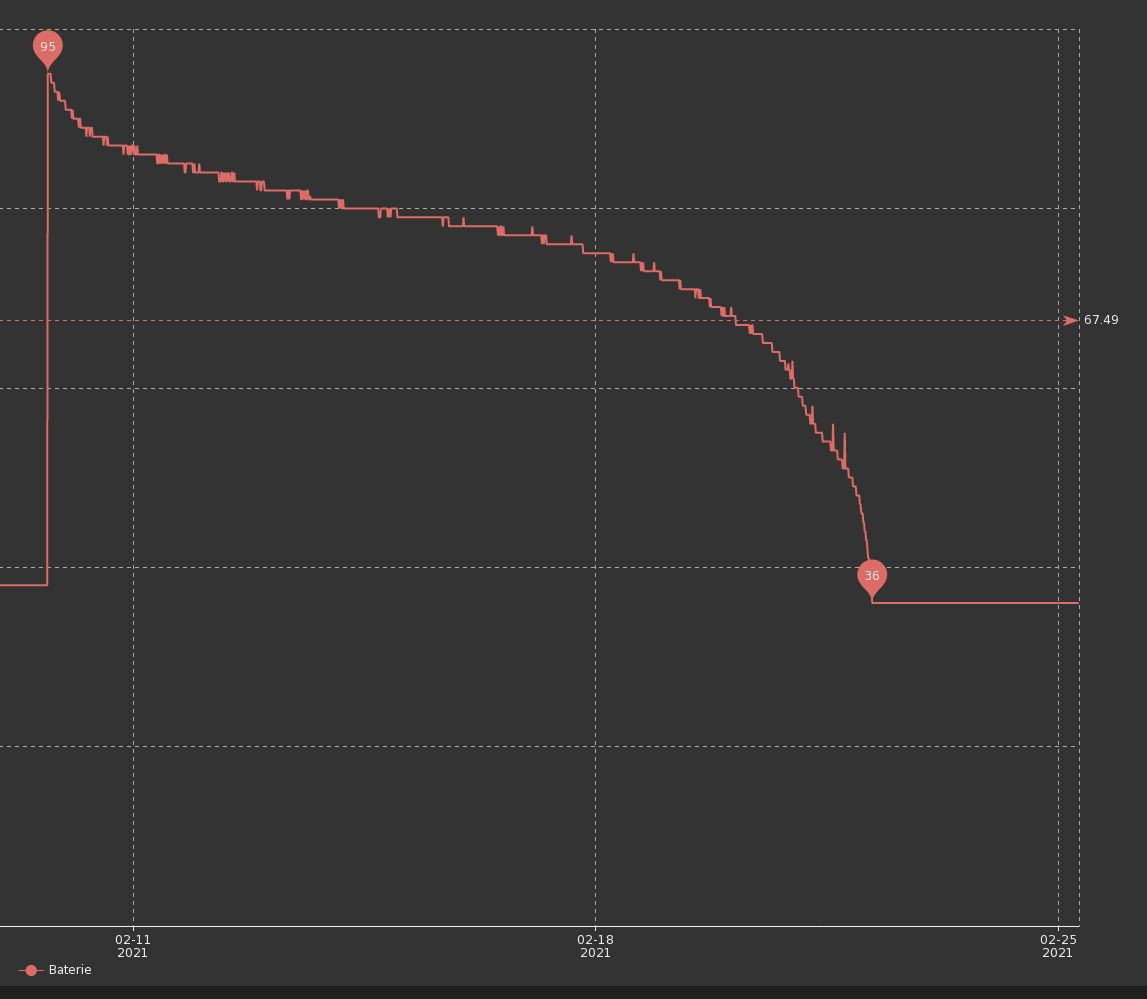@zboblamont Thanks for the tip. I am trying to avoid hardcoding any addresses - maybe I find out that it will be necessary at some point. But so far it looks fine:
23:08:43.873 -> 0 MCO:BGN:INIT GW,CP=R-NGA---,FQ=8,REL=255,VER=2.3.2
23:08:44.438 -> 585 GWT:TPC:IP=192.168.1.113
23:08:45.468 -> 1589 MCO:BGN:STP
23:08:45.468 -> 1591 MCO:REG:NOT NEEDED
23:08:45.468 -> 1595 MCO:BGN:INIT OK,TSP=NA
23:08:45.468 -> 1597 GWT:TPC:IP=192.168.1.113
23:08:46.464 -> 2600 GWT:RMQ:CONNECTING...
23:08:46.464 -> 2611 GWT:RMQ:OK
23:08:46.464 -> 2613 GWT:TPS:TOPIC=1wire-out/0/255/0/0/17,MSG SENT
23:08:46.497 -> 2619 GWT:TPS:TOPIC=1wire-out/0/255/3/0/11,MSG SENT
23:08:46.497 -> 2625 GWT:TPS:TOPIC=1wire-out/0/255/3/0/12,MSG SENT
23:08:46.497 -> DBG: loop start
23:08:47.559 -> 0 : 280838211713012D
23:08:47.559 -> 3704 GWT:TPS:TOPIC=1wire-out/0/0/1/0/42,MSG SENT
23:08:47.592 -> 0 : 5A014B467FFF0C1044 : 21.62
23:08:47.626 -> 3753 GWT:TPS:TOPIC=1wire-out/0/0/1/0/0,MSG SENT
23:08:47.692 -> 1 : 28A82B7D17130189
23:08:47.692 -> 3825 GWT:TPS:TOPIC=1wire-out/0/1/1/0/42,MSG SENT
23:08:47.692 -> 1 : 53014B467FFF0C102D : 21.19
23:08:47.758 -> 3876 GWT:TPS:TOPIC=1wire-out/0/1/1/0/0,MSG SENT
23:08:47.824 -> 2 : 28949D2816130138
23:08:47.824 -> 3948 GWT:TPS:TOPIC=1wire-out/0/2/1/0/42,MSG SENT
23:08:47.824 -> 2 : 5F014B467FFF0C1012 : 21.94
23:08:47.858 -> 3999 GWT:TPS:TOPIC=1wire-out/0/2/1/0/0,MSG SENT
23:08:47.924 -> 3 : 282C3C2A16130167
23:08:47.924 -> 4071 GWT:TPS:TOPIC=1wire-out/0/3/1/0/42,MSG SENT
23:08:47.957 -> 3 : 56014B467FFF0C107B : 21.37
23:08:47.990 -> 4122 GWT:TPS:TOPIC=1wire-out/0/3/1/0/0,MSG SENT
23:08:48.057 -> 4 : 28FC801F16130104
23:08:48.057 -> 4194 GWT:TPS:TOPIC=1wire-out/0/4/1/0/42,MSG SENT
23:08:48.057 -> 4 : 5C014B467FFF0C10D7 : 21.75
23:08:48.123 -> 4245 GWT:TPS:TOPIC=1wire-out/0/4/1/0/0,MSG SENT
23:08:48.190 -> 5 : 2832312A161301C3
23:08:48.190 -> 4317 GWT:TPS:TOPIC=1wire-out/0/5/1/0/42,MSG SENT
23:08:48.190 -> 5 : 58014B467FFF0C10C2 : 21.50
23:08:48.223 -> 4368 GWT:TPS:TOPIC=1wire-out/0/5/1/0/0,MSG SENT
23:08:48.322 -> 6 : 28CAD31F16130180
23:08:48.322 -> 4440 GWT:TPS:TOPIC=1wire-out/0/6/1/0/42,MSG SENT
23:08:48.322 -> 6 : 57014B467FFF0C1038 : 21.44
23:08:48.356 -> 4489 GWT:TPS:TOPIC=1wire-out/0/6/1/0/0,MSG SENT
23:08:48.422 -> 7 : 28FFE4493118014F
23:08:48.422 -> 4560 GWT:TPS:TOPIC=1wire-out/0/7/1/0/42,MSG SENT
23:08:48.422 -> 7 : 58014B467FFF0C10C2 : 21.50
23:08:48.488 -> 4612 GWT:TPS:TOPIC=1wire-out/0/7/1/0/0,MSG SENT
23:08:48.555 -> 8 : 28FF345E311801AF
23:08:48.555 -> 4683 GWT:TPS:TOPIC=1wire-out/0/8/1/0/42,MSG SENT
23:08:48.555 -> 8 : 5B014B467FFF0C1007 : 21.69
23:08:48.621 -> 4734 GWT:TPS:TOPIC=1wire-out/0/8/1/0/0,MSG SENT
23:08:48.687 -> 9 : 28FF094131180165
23:08:48.687 -> 4806 GWT:TPS:TOPIC=1wire-out/0/9/1/0/42,MSG SENT
23:08:48.687 -> 9 : 55014B467FFF0C10BE : 21.31
23:08:48.721 -> 4855 GWT:TPS:TOPIC=1wire-out/0/9/1/0/0,MSG SENT
23:08:48.787 -> 10 : 28FFE513311802A3
23:08:48.787 -> 4927 GWT:TPS:TOPIC=1wire-out/0/10/1/0/42,MSG SENT
23:08:48.820 -> 10 : 51014B467FFF0C10AB : 21.06
23:08:48.853 -> 4980 GWT:TPS:TOPIC=1wire-out/0/10/1/0/0,MSG SENT
23:08:48.920 -> 11 : 28FF2B1F31180231
23:08:48.920 -> 5052 GWT:TPS:TOPIC=1wire-out/0/11/1/0/42,MSG SENT
23:08:48.920 -> 11 : 56014B467FFF0C107B : 21.37
23:08:48.986 -> 5103 GWT:TPS:TOPIC=1wire-out/0/11/1/0/0,MSG SENT
23:08:48.986 -> DBG: loop end




